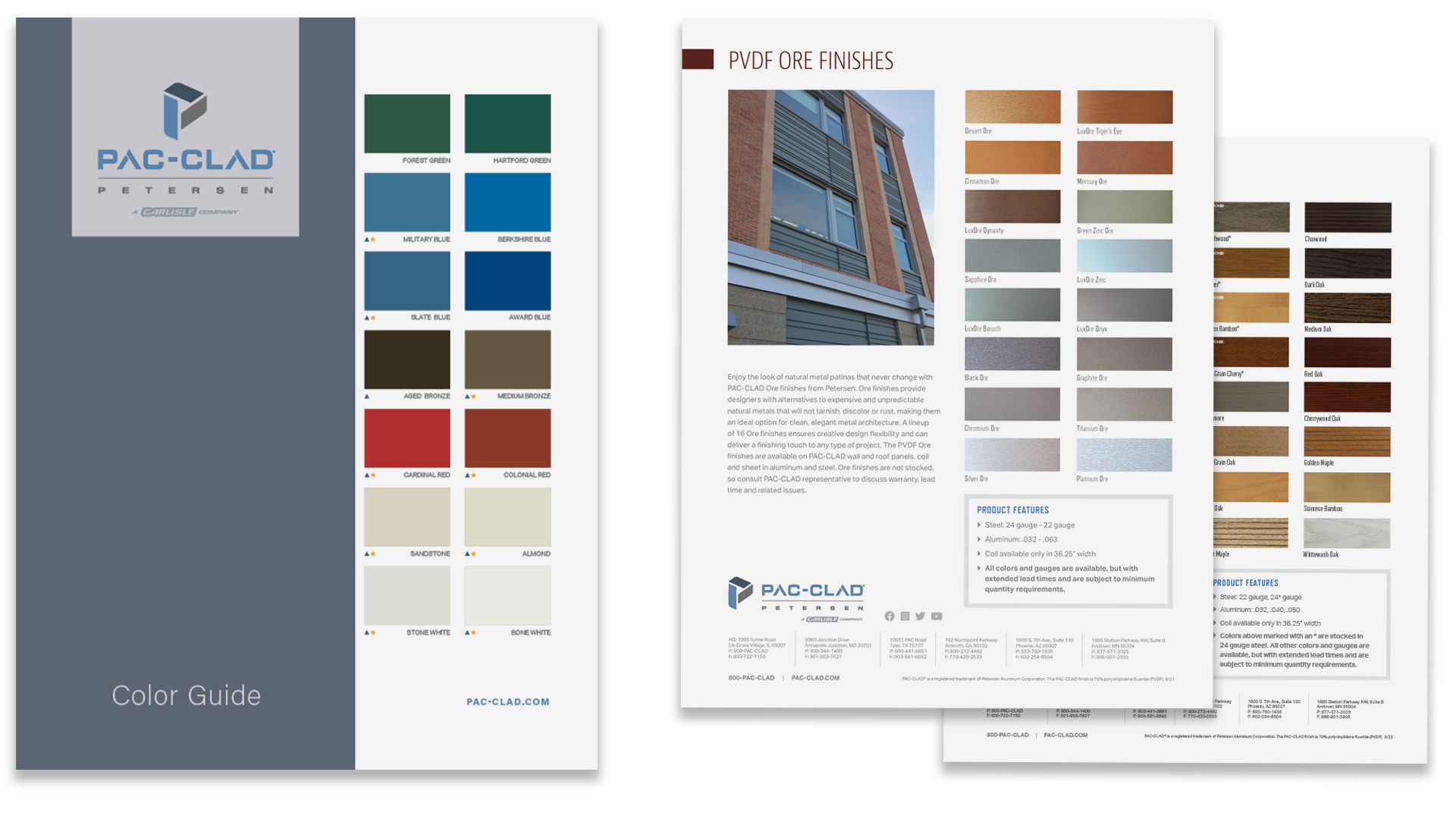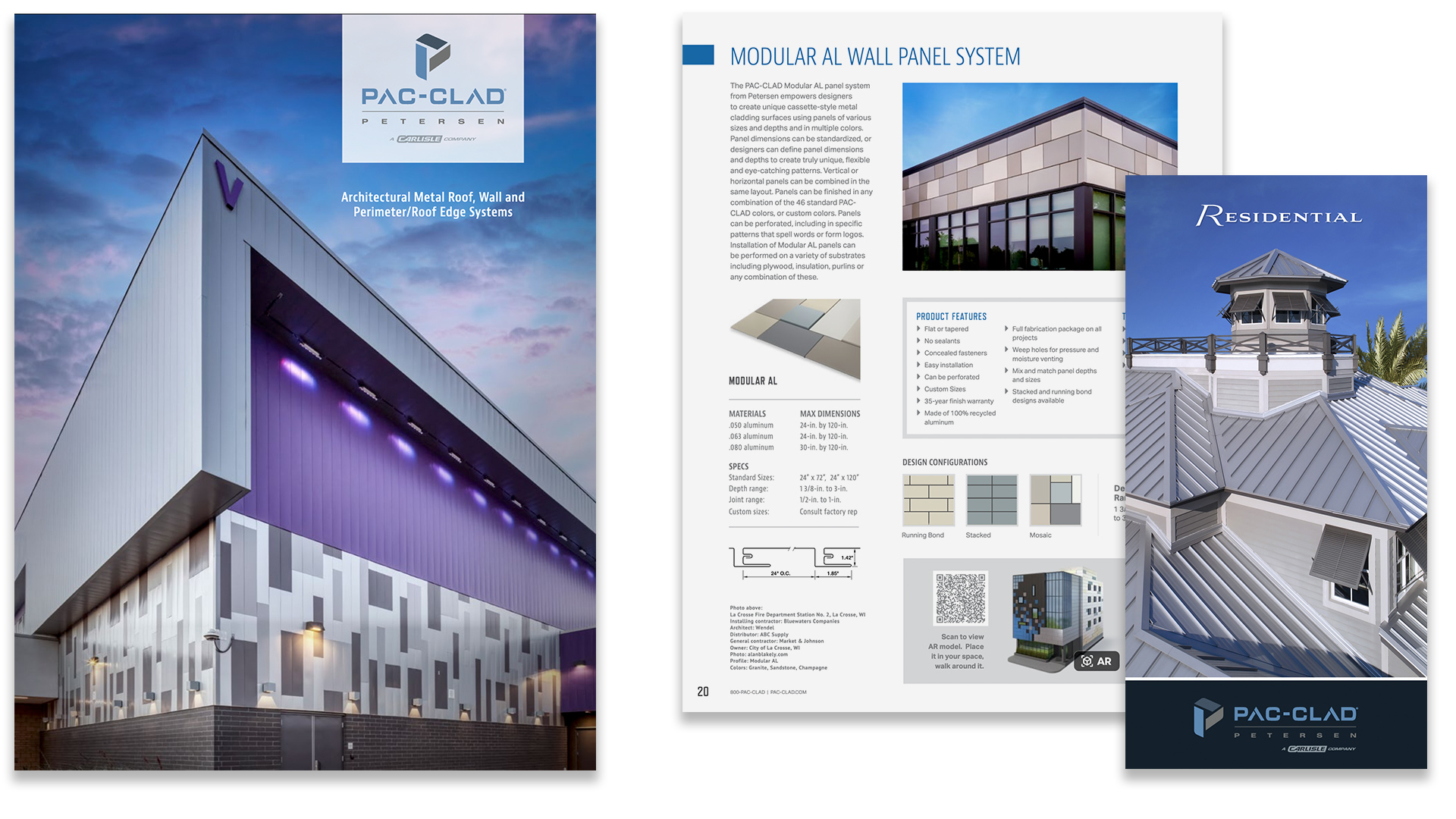Designers can specify with confidence with Petersen Aluminum’s Environmental Product Declaration
Download the Environmental Product Declaration from Petersen Aluminum
Elk Grove Village, Ill. (May 6, 2015) – Petersen Aluminum’s recently released Environmental Product Declaration delivers cradle-to-grave transparency for the manufacturing, installation, maintenance and recycling of its roll-formed steel and aluminum roof and wall panels. The EPD pulls back the curtain on environmental impact for architects and specifiers that are looking for products with documented and verified environmental impact data. The EPD also can help architects and specifiers earn LEED points, as well as credits for other sustainable construction programs.
Architects, specifiers and other construction professionals that choose Petersen Aluminum products covered by its EPD can qualify for credit within the category of Material and Resource, Building Product Disclosure and Optimization in LEED v.4. Green Globes and other sustainable building certification programs also offer credit for EPDs. Petersen Aluminum brand name products covered by its EPD include Snap-Clad, Tite-Loc, Tite-Loc Plus, Snap-On and Redi-Roof roofing panels, as well as exposed fastener wall panels, corrugated horizontal wall panels, and flush and reveal wall panels.
Petersen Aluminum published its EPD to meet the increasing demand in the construction community to recognize the full extent of a product’s environmental impact. Release of its EPD titled “Roll-Formed Cladding, Aluminum Panels and Steel Panels” positions Petersen Aluminum as a leader in sustainability and environmental impact transparency. The EPD also demonstrates Petersen Aluminum’s willingness to benchmark its performance as a means toward continuous improvement.
The EPD was carefully prepared by Thinkstep and certified by UL Environment, which painstakingly verified all pertinent information in the report. The EPD is valid until March 2020 and will be updated based on continued process improvements.
“Going through the process was an eye opener, and has identified ways for us to improve efficiencies in our production process,” says Mike Petersen, CEO, Petersen Aluminum. “We are also working to reduce packaging costs across our product line. All of this is the result of working through the EPD process, which is ongoing. We are pleased to be one of the first American companies to publish an Environmental Product Declaration for our roofing and wall panel product lines. We are grateful for first working with the Metal Construction Association a couple of years ago to create their industry-wide EPD, which laid the ground work for our EPD.”
Prior to publishing its EPD, Petersen Aluminum participated in an EPD with five other Metal Construction Association member companies, all of which manufacture metal cladding panels. MCA published its industry-wide, cradle-to-gate EPD titled “Roll Formed Steel Panels for Roofs and Walls” in February 2014. Both EPDs follow UL’s Product Category Rule, “Metal Cladding, Roof and Wall Panels,” and were prepared according to ISO 14025. However, Petersen Aluminum’s EPD goes beyond the MCA’s report – which stops at the factory gate – by providing a cradle-to-grave examination of its products’ life cycles. In addition, it also focuses only on Petersen Aluminum products, including extraction and transport of raw materials, manufacturing, transportation to installation site, installation, panel maintenance and end-of-life disposal.
Significance of EPDs
EPDs provide transparency into the impacts of a product at each stage of its life cycle. Increasingly, building owners and operators are requiring products for which EPDs exist. According to UL Environment, 65 percent of consumers globally agree or strongly agree that they would purchase environmentally responsible products if a company’s health and environmental claims were more believable.
The U.S. Green Building Council states the goal of an EPD is to encourage the use of products and materials for which life-cycle information is available and that have environmentally, economically and socially preferable life-cycle impacts. Another goal is to reward project teams for selecting products from manufacturers who have verified improved environmental life-cycle impacts. Petersen Aluminum’s EPD and the products it covers, including those from other manufacturers, can be found on UL’s Sustainable Product Guide found at productguide.ulenvironment.com. Petersen Aluminum’s EPD also can be found on its web site at pac-clad.com in the Products section.
While many architects and specifiers are using EPDs as a way to “check a box” on their design checklists, others are taking full advantage of the data an EPD provides, says Heather Gadonniex, director of sustainable building and construction for Thinkstep. “Even the box-checkers are doing good by using products with EPDs because they are driving demand for disclosure and improvement of environmental impacts. Sophisticated building owners are starting to use the data, such as carbon impact results, to inform their purchasing decisions. That is a smaller subset but is starting to grow. Also, third-party software companies are developing tools to embed the EPD data within their programs. This is the future of how EPD information will be applied.”
Gadonniex cautions against using EPDs to compare products from different manufacturers. “I steer clear of the word ‘compare.’ While EPDs bring us to the apple-to-apple level, remember there are many types of apples, and it could be like comparing a Red Delicious to a Granny Smith apple. The data used to make an EPD comes from a manufacturer, which is computed with data sets from a secondary source like Thinkstep. These secondary sources of data can vary among data providers like ours and are often not comparable. Thinkstep is involved in many global efforts to help harmonize this data,” she says.
Anna Nicholson, EPD product manager, UL Environment, believes that the future of EPD significance is heading toward increased comparability to enable decision makers to procure products on the basis of environmental impact. “We can’t do that until we have greater confidence in the underlying data and methods used to create EPDs. The more robust data and tools we have, the better we can set certification levels for qualifying programs and credits. We’re seeing movement in Europe where eventually environmental data may serve as a barrier to market entry, meaning that some day products will be required to have an EPD, and environmental performance could potentially be used as a basis for market restrictions. This is not a near-term reality, but those discussions are being had,” Nicholson says.










